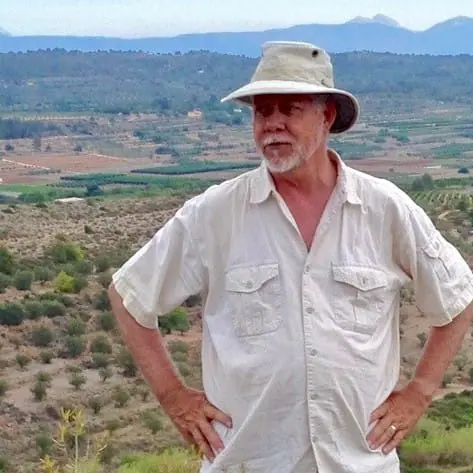In this series, we're sitting down with Swette Center affiliated faculty to catch up on food systems, innovation, and what makes a good meal. See the rest of the series on our Faculty Profiles page.
Read on for an interview with Michael Barton, Director of Education and Professor in the School of Complex Adaptive Systems.

How did you become interested in food systems?
My long term research interest has been in human environmental interaction—how people interact with their environments and the relationships between human behaviors and environmental change. Initially, I explored how hunter gatherers functioned in environments of the last glacial period. But beginning some decades ago, I got increasingly interested in how people have transformed the world since the beginning of agriculture. How did we transform from being resource collectors, people who collected plants and animals and other things to eat from the naturally occurring environment, to becoming resource managers that control local populations of plants and animals for nourishment? And then, how did that development create feedback loops that continued to transform landscapes and people over long periods of time?
Can you share a glimpse of your current research and how it applies to food systems transformation?
I've long worked in one of the oldest parts of the world where this transformation to food production began: the Mediterranean, eastern Spain in particular. I've had a lot of support from the National Science Foundation to do field work there, which has allowed me to collect empirical data and artifacts and things like that. But ultimately, I'm interested in system dynamics. Increasingly, I've turned to computer simulation modeling as a way to test ideas about how people get food from their environments. We've created modeling laboratories where we can simulate smallholder farmers and herders and put them in different kinds of landscapes, give them different rules of behavior, and then turn them loose in a digital world to see what happens under different conditions. What happens to the landscape and what happens to the people? What strategies are more successful over short periods of time, but are less successful over long periods of time? This kind of multidisciplinary approach is part of the Mediterranean Landscape Dynamics Project, and we’ve been using it to build on prior research for over a decade.
So currently, I'm doing research on the emergence of coupled natural human landscapes. Those are landscapes that didn't exist 10,000 years ago, and now cover the entire planet. Every place humans live has landscapes that are affected both by human activity and non-human factors. For example, there’s recently been massive floods in Valencia, Spain, that have killed many people. This is one place that you might say is completely anthropogenic. People have lived in towns and cities for thousands of years, constructing the built environment. And outside of that, there are farms with terraces where people have re-engineered entire slopes and terrain. So in that sense, it's a human environment. But they still experience rainfall, in this case massive rainfall. Water still flows downhill. As a result, a lot of those agricultural features have been destroyed, and town walls knocked down. Like any place, they’re affected both by what people do, but also by natural processes. That’s the kind of work that I do and write about as a complex system scientist.
What’s an innovation in food systems that you’re excited about?
Since I don't deal with modern agriculture, this is a challenging question. I think that the important thing we need to do is to make sure that our food systems are highly adaptable in a world where the future is probably not going to be as much like the past. But an important factor that people need to remember, especially in places like here at ASU, is that in order to support a population of over 8 billion people, whatever solutions that we think of for food production have to be scalable. For example, slash and burn is highly sustainable; it maintains soil fertility and it can be done for a long period of time. However, the reason we don't find much slash and burn agriculture today is because we can't feed many people with it. So people have taken over the process, adding chemical fertilizers and switching from polyculture to monoculture.
As a historical scientist, I know that agricultural success enabled population growth and higher concentrations of people in towns and cities. Over time, traditional farming systems could no longer support the larger, more concentrated populations. In essence, the success of one system created conditions that rendered it unsustainable, forcing people to adapt and develop new approaches. That’s why I think flexibility and scalability have to be kept in mind if we're going to be successful at maintaining sustainable food systems in the future. It doesn't mean we need bigger or more corporate agriculture, but we have to keep those two dimensions in mind or our solutions won’t work for the long-term.
What’s your favorite weeknight meal?
Generally, my family eats a lot of Mediterranean foods, especially pasta. In part because we like it, and in part because it's easy. One of our favorites is Trader Joe’s Spinach Tortellini. Tonight though, I think we're going to be having a pumpkin chili.